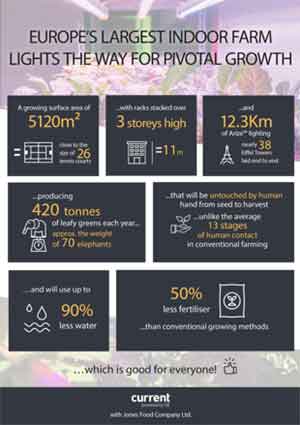
Biologicalisation is Coming of Age

One of this year’s Nobel Prize in Chemistry winners was Frances H. Arnold. This Linus Pauling Professor at the California Institute of Technology had invented systems for the directed evolution of enzymes that are now routinely used to, e.g., develop catalysts for manufacturing. Importantly, this includes supporting more environmentally friendly manufacturing of such chemical substances as pharmaceuticals and renewable fuels [1]. This event could be considered an inauguration of a much larger recent initiative to transform our manufacturing methods by the incorporation of biological and bio-inspired principles, materials and functions. It’s noteworthy that this is only the fifth woman in history to have received the prize in Chemistry. As it is her work that promises to contribute to this next revolution in manufacturing, we find it emblematic of our long-neglected recognition of women’s contribution in science.
So, what is the actual problem that this “biologicalisation” is attempting to remedy? An interesting historical story illustrates developments in our current 20th century-style manufacturing approaches that aren’t necessarily the most efficient or environmentally sustainable. An early western commercial manufacturing processes was the “German Method” of acetic acid manufacturing. In this process, a tower packed with wood shavings was

perfused with an alcohol-containing feed (created by natural fermentation). The brew was trickled into the top of the tower and supported the sequential aerobic fermentation of the alcohol by the bacterium Acetobacter to acetic acid as the solution percolated down through the fixed bed. The picture to the right is of a Perstorp early acetic acid purification plant in 1884. This was all well and good until it was discovered that acetic acid could be generated synthetically from relatively inorganic compounds. The original reaction sequence consisted of chlorination of carbon disulfide to carbon tetrachloride, followed by pyrolysis to tetrachloroethylene and then aqueous chlorination to trichloroacetic acid—finally concluding with an electrolytic reduction to acetic acid [2]. Now, while the pathways ultimately commercialized were a bit more convenient, this does illustrate the Wests love affair with highly synthetic and unnatural manufacturing methods! Some of the largest problems with such approaches are the cumulative energy required and use of, e.g., organic solvents or heavy metals.
 But, all that seems to be changing. This year Fraunhofer-Gesellschaft held a meeting in Berlin reviewing the current initiative to replace many of our artificial manufacturing approaches with more biomimetic procedures and chemistries [3]. This meeting, the Biological Transformation of Manufacturing brought together experts from around the world to discuss both goals and mechanisms that can support more efficient and sustainable manufacturing approaches. Interestingly, digitalization and so-called Digital Biomanufacturing [4] are also regarded as major contributors to this Biologicalisation of Manufacturing. Many manufacturing processes, systems and supply chains are being addressed by these new approaches. In fact, a harmonization of digital manufacturing principals with structures and chemistries from biological systems define this next generation manufacturing technology and systems. This modern approach to a biological transformation of the value chain intends to inculcate the application of natural resources and principles in synergy with developing approaches to digital technology and equipment. The goals of sustainability and efficiency, supported by biotechnology, nanotechnologies and advanced information technologies is defining new opportunities in product development and manufacturing.
But, all that seems to be changing. This year Fraunhofer-Gesellschaft held a meeting in Berlin reviewing the current initiative to replace many of our artificial manufacturing approaches with more biomimetic procedures and chemistries [3]. This meeting, the Biological Transformation of Manufacturing brought together experts from around the world to discuss both goals and mechanisms that can support more efficient and sustainable manufacturing approaches. Interestingly, digitalization and so-called Digital Biomanufacturing [4] are also regarded as major contributors to this Biologicalisation of Manufacturing. Many manufacturing processes, systems and supply chains are being addressed by these new approaches. In fact, a harmonization of digital manufacturing principals with structures and chemistries from biological systems define this next generation manufacturing technology and systems. This modern approach to a biological transformation of the value chain intends to inculcate the application of natural resources and principles in synergy with developing approaches to digital technology and equipment. The goals of sustainability and efficiency, supported by biotechnology, nanotechnologies and advanced information technologies is defining new opportunities in product development and manufacturing.

This transformation will therefore involve the development of sustainable materials and manufacturing processes, resource-efficient products and services, as well as new medical treatments based on the application of both biological mechanisms and Industry 4.0 principals. As this movement is in its infancy, means and approaches of this transformation are diverse, and open to much interpretation. For example, the production of modern cellular, protein and nucleic acid-based pharmaceuticals in animal cells could be regarded as an implementation of such approaches. Although acellular, but biologically based enzyme-driven approaches, might fit other stricter definitions of the revolution. The exciting development of organic light-emitting diode (OLEDs) can be regarded and another approach, because they are based upon potentially more sustainable chemistries than, for example, quantum light-emitting diode (QLEDs). From a larger system perspective, GE’s Arize* LED Horticultural Lighting Solution to vertical farming could embody another vision of biologicalisation [5]. One new project, a collaboration between General Electric and the Jones Food Company, enables a high-care operation that can potentially redefine the future of global food, pharma and cosmetics. Environmental benefits of this particular project include producing green, leafy vegetables with 90% less water, 50% less fertilizer, reduced energy and carbon footprint as well with the total elimination of herbicide and pesticides. Furthermore, the clean room automation envisioned enables a “no touch” harvesting, as compared to an average of 13 human contact stages with conventional farming [6]. Remarkably, this virtually eliminates the contaminant risk of pathogenic bacterial contamination produced in conventional farming techniques.
Well, whatever the chemistries, technologies or applications– this ‘biologicalisation’ promises to impart a new vision to our concept of manufacturing. Leaving the old 20th century concept of highly energy-dependent and dangerous chemical-employing processes to embrace more efficient, biomimetic , water-based and sustainable chemistries that can better support our societies for the next century.
About the Author:

William Whitford, Strategic Solutions Leader, Bioprocess, GE Healthcare
Bill Whitford is a Strategic Solutions Leader at GE Healthcare in Logan, UT with over 20 years experience in biotechnology product and process development. He joined the company as an R&D Leader developing products supporting protein biological and vaccine production in mammalian and invertebrate cell lines. Products he has commercialized include defined hybridoma and perfusion cell culture media, fed-batch supplements and aqueous lipid dispersions. An invited lecturer at international conferences, Bill has published over 250 articles, book chapters and patents in the bioproduction arena. He now enjoys such activities as serving on the Editorial Review Board for BioProcess International.
Footnotes
-
1. https://www.nobelprize.org/prizes/chemistry/2018/press-release/
-
2. https://en.m.wikipedia.org/wiki/Acetic_acid
-
3. https://www.fraunhofer.de/de/veranstaltungen-messen/veranstaltungen/biological-transformation-of-manufacturing.html
-
4. https://cellculturedish.com/digital-biomanufacturing-will-enable-tissue-bioprinting/
-
5. https://products.currentbyge.com/horticulture/arize-life
-
6. https://www.businesswire.com/news/home/20180607005249/en/Current-powered-GE-Jones-Food-Company-Partner